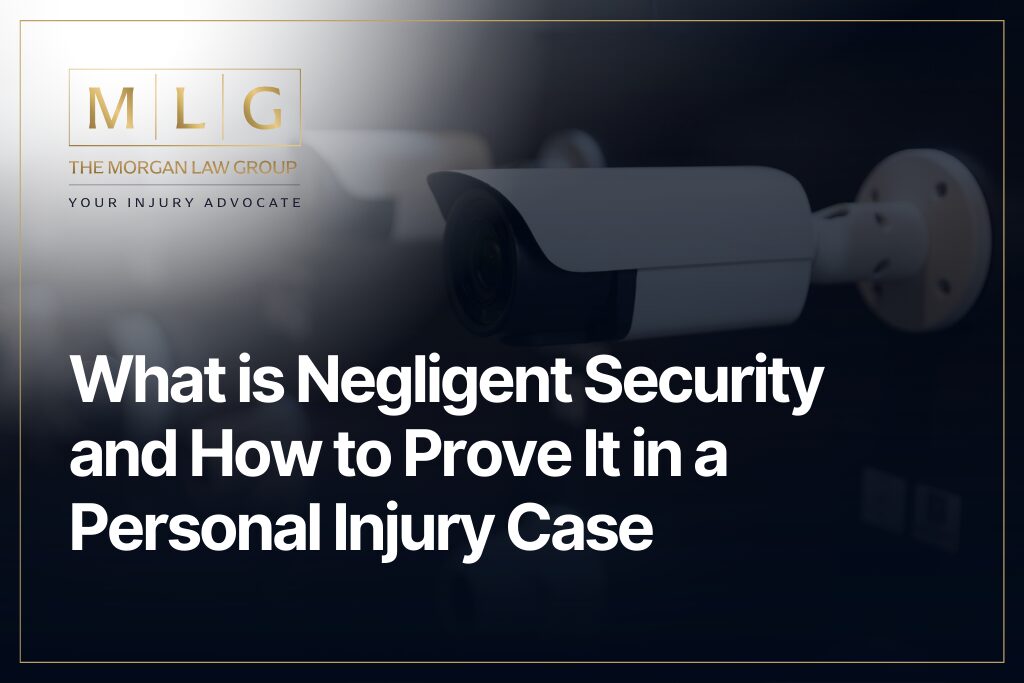When entering a place like a store, apartment complex, or any type of venue, we have a reasonable expectation of safety. Premises owners must uphold a certain standard of care that helps protect visitors and tenants from foreseeable harm. Unfortunately, there are times when property owners and managers fail in this duty, and when criminal acts lead to injuries or worse, victims may have grounds for a negligent security personal injury case.
What is Negligent Security?
Negligent security falls under the broader umbrella of premises liability law.At its core, the concept refers to situations where a property owner or manager fails to implement and maintain reasonable security measures to protect lawful visitors from foreseeable crimes. When a preventable injury occurs as a direct result of this negligence, the victim may have legal grounds to pursue compensation for their losses. Negligent security can take many forms. Here are the top 10 most common examples:
- Insufficient Lighting: Dark parking lots, hallways, stairwells, and other areas create opportunities for criminals to hide and make it difficult for potential victims to be aware of their surroundings.
- Broken Locks and Security Systems: Malfunctioning locks on doors, windows, or gates provide easy access. Non-working alarms or outdated systems easily bypassed offer a false sense of security.
- Lack of Security Cameras (or Non-Working Cameras): Lack of visible surveillance or using fake cameras deters crime. Without footage, identifying perpetrators is extremely difficult.
- Inadequate Security Personnel: No security guards in areas known for risk, improperly trained/supervised guards, or guards failing to perform their duties properly (e.g., sleeping on the job) all create major vulnerabilities.
- Untrimmed Landscaping: Overgrown shrubbery, trees, or unkempt grounds provide hiding places for potential attackers and impede lines of sight for observation.
- Failure to Address Prior Criminal Activity: A history of crimes on the property without meaningful corrective action by the owner demonstrates a potential disregard for safety.
- Poor Tenant Screening: Especially in housing complexes, failure to conduct background checks risks residents’ safety, potentially increasing the risk of crimes from within the community.
- Lack of Warning Signs: If known hazards exist (construction, slippery floors, uneven walkways), not posting warnings raises liability risks.
- Ignoring Reports of Suspicious Activity: When tenants or patrons report concerning behavior, inaction by management raises serious red flags.
- Non-Functional Emergency Systems: Broken emergency phones, panic buttons, or call boxes, especially in high-risk areas, deprive victims of a chance to summon help quickly.
The journey to proving negligent security in a personal injury lawsuit requires a comprehensive understanding of legal standards and the presentation of clear, compelling evidence. The process typically involves establishing several key elements:
- Duty of Care: It must be established that the property owner owed a duty of care to the victim. This duty varies based on the relationship between the property owner and the injured party (e.g., invitee, licensee, or trespasser), with the highest duty owed to invitees or those invited onto the property for business purposes.
- Breach of Duty: The victim must demonstrate that the property owner breached their duty of care by failing to provide adequate security measures. This can include a wide range of failures, from insufficient lighting to the absence of security personnel.
- Foreseeability: The crime or incident that led to the injury must have been foreseeable, meaning that the property owner could have anticipated the risk of such an incident occurring based on previous incidents or other relevant information.
- Causation: There must be a direct link between the lack of adequate security measures and the injury sustained by the victim. This means proving that the injury would not have occurred if proper security measures had been in place.
- Damages: Finally, the victim must have suffered actual damages as a result of the incident, which can include medical expenses, lost wages, and pain and suffering.
Proving Negligent Security in a Personal Injury Case
Proving negligent security involves demonstrating that the property owner’s failure to provide a safe environment directly resulted in your injury. This six-step process outlines a clear path to establish the key elements of your case, from identifying the duty of care to documenting your losses.
Step 1: Establish Duty of Care
Identify the relationship between you and the property owner to prove that they owed you a duty of care. This step is crucial, as it sets the foundation for your claim by demonstrating that the property owner was responsible for ensuring your safety while you were on their premises.
Step 2: Document the Breach of Duty
Gather evidence to show that the property owner failed to meet their duty of care. This could include photos of inadequate lighting, broken locks, or other security failures. Witness statements and expert testimony can also support your claim that the property owner did not take the necessary precautions to prevent foreseeable risks.
Step 3: Prove Foreseeability of Harm
Demonstrate that the risk of harm was foreseeable, meaning the property owner could or should have anticipated the potential for the incident that led to your injury. This may involve showing past incidents of similar nature on the property or in the vicinity, which should have prompted the owner to enhance security measures.
Step 4: Link the Breach to Your Injury (Causation)
Establish a direct connection between the property owner’s breach of duty and the harm you suffered. This step is vital to prove that your injury was a direct result of the negligent security rather than another cause. Medical records and expert testimony can be pivotal in illustrating this link.
Step 5: Quantify Your Damages
Detail the full extent of your damages, including medical expenses, lost wages, pain and suffering, and any other losses incurred as a result of the injury. This comprehensive documentation is necessary to ensure you seek adequate compensation for all your damages.
Step 6: Seek a Personal Injury Attorney in Florida
Consult with a personal injury lawyer experienced in negligent security cases. A legal professional can help navigate the complexities of your case, from gathering and presenting evidence to negotiating with insurance companies or representing you in court.
Legal Assistance from Morgan Law Group
Negligent security represents a failure on the part of property owners to fulfill their obligation to provide a safe environment, leading to preventable harm. Proving negligent security in a personal injury case requires a strategic approach to demonstrate the property owner’s failure and its direct impact on the victim. If you or a loved one has been injured due to negligent security, it is crucial to seek the assistance of knowledgeable personal injury attorneys.
The Morgan Law Group stands ready to offer legal representation, ensuring that victims receive the compensation they deserve for their injuries and losses. Do not let the negligence of property owners go unchallenged. Contact our injury attorney today for a consultation and take the first step towards securing justice and compensation for your suffering.

